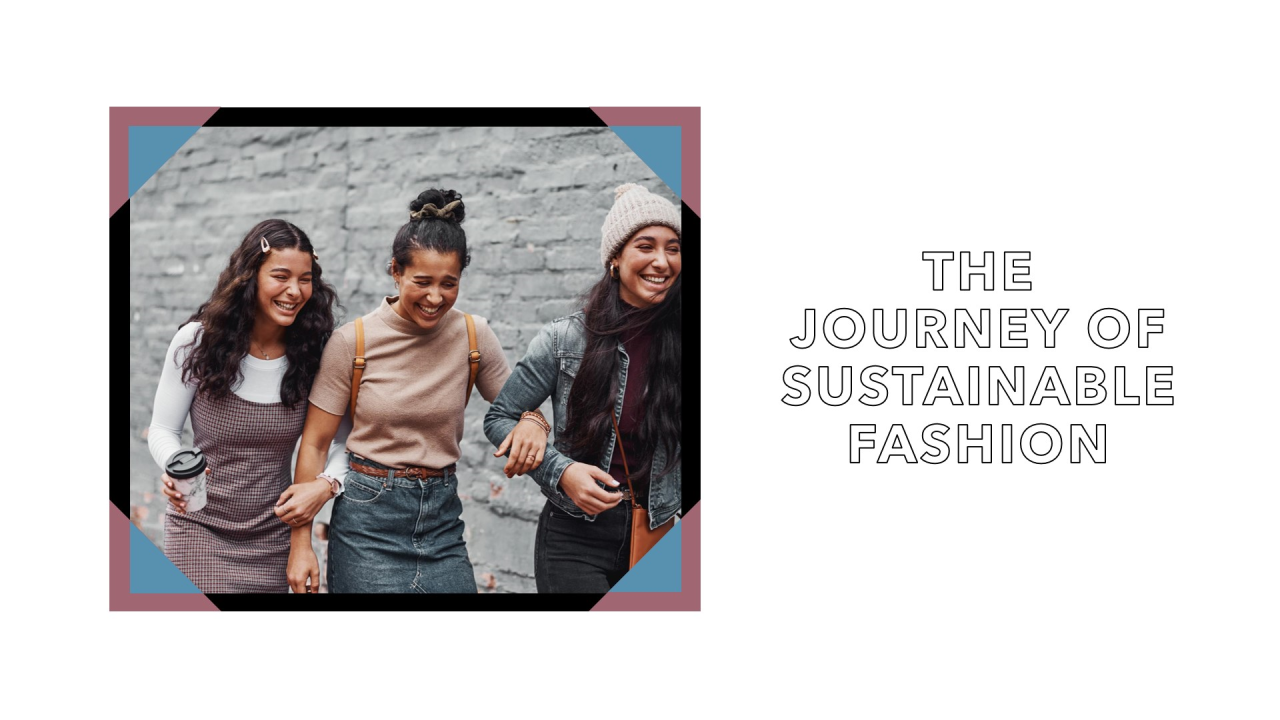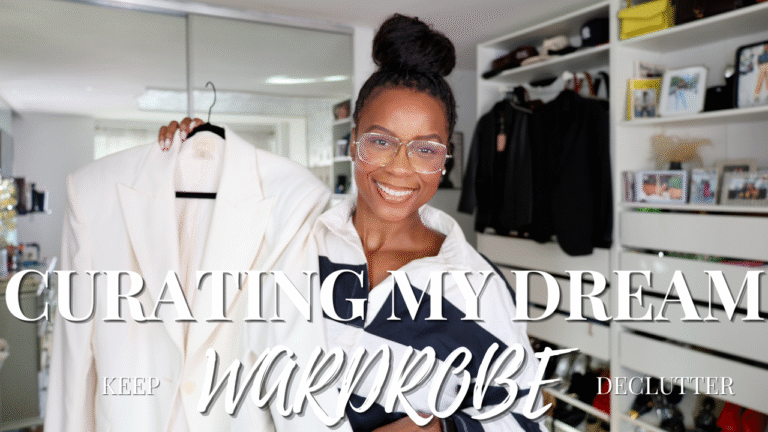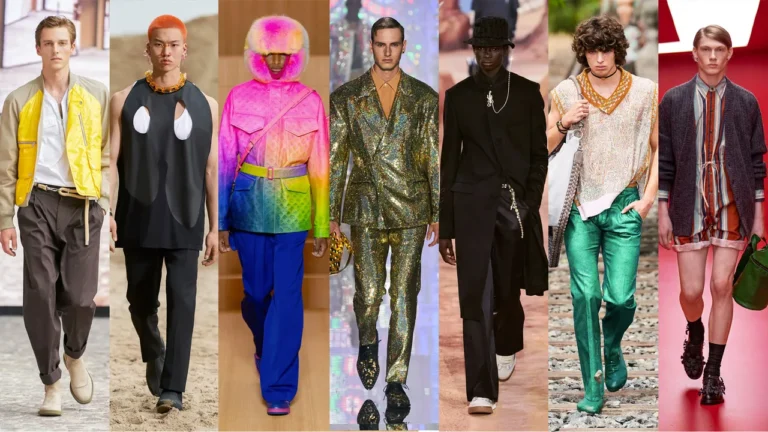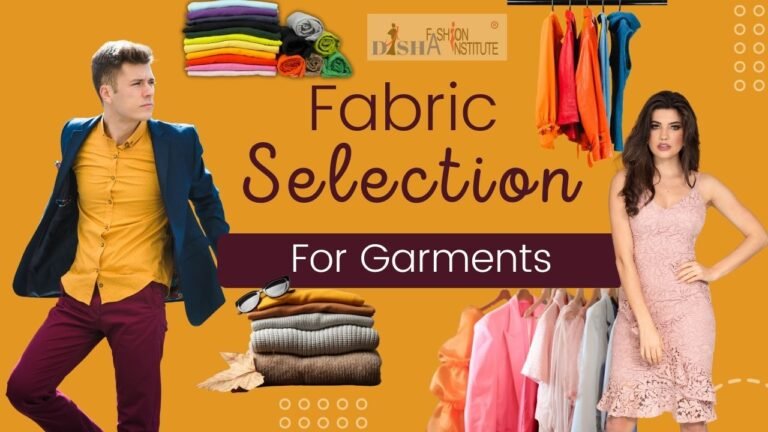The Complete Guide To Fashion Evolution Sustainability And Modern Style
The Evolution of Fashion A Century of Style Transformations
The evolution of fashion is a dynamic journey, reflecting societal shifts, technological advancements, and cultural movements. From the restrictive corsetry of the early 20th century to today’s diverse and often gender-fluid styles, fashion has continually adapted, mirroring the world around it.
The Dawn of a New Century (1900s-1920s)
The early 1900s, or Edwardian period, featured the “S-bend” silhouette, achieved with corsets, and elaborate, opulent dresses [Source: Fashion History Timeline, FIT]. The 1910s saw a gradual loosening of silhouettes, partly due to designers like Paul Poiret [Source: The Metropolitan Museum of Art], and World War I led to more practical attire as women entered the workforce. The Roaring Twenties brought a radical shift with the flapper look, defined by short, loose dresses and bobbed hairstyles, reflecting newfound social freedoms and the jazz age [Source: Britannica].
Mid-Century Transformations (1930s-1950s)
The Great Depression in the 1930s led to more conservative, practical fashion with longer, leaner silhouettes emphasizing natural waistlines, often with bias-cut dresses [Source: The Metropolitan Museum of Art]. Hollywood glamour also influenced trends. World War II brought rationing and a utilitarian approach in the 1940s, with simpler designs and practical suits prioritizing durability [Source: Imperial War Museums]. Post-war optimism in the 1950s ushered in Christian Dior’s revolutionary “New Look” in 1947, featuring nipped-in waists and full skirts, celebrating femininity and luxury [Source: Victoria and Albert Museum]. This decade also saw the rise of youth culture influencing casual styles.
Decades of Rebellion and Diversity (1960s-1990s)
The 1960s were a period of immense social upheaval, reflected in fashion’s radical shift with miniskirts, vibrant colors, and gender-neutral styles popularized by designers like Mary Quant [Source: Victoria and Albert Museum]. The 1970s embraced diverse subcultures, from bohemian and disco to punk, showcasing a breakdown of rigid fashion rules. The 1980s were defined by excess and power dressing, with bold shoulders, vibrant colors, and athletic wear as streetwear, heavily influenced by pop music and consumer culture [Source: Vogue]. The 1990s brought a shift towards minimalism, grunge, and anti-fashion, with slip dresses and ripped jeans, along with the growing influence of hip-hop culture.
The Modern Fashion Landscape (2000s-Present)
The early 2000s blended streetwear, denim, and pop culture, with low-rise jeans and the rise of fast fashion. The 2010s saw social media’s explosion, accelerating trend cycles and making athleisure dominant. Sustainability also began gaining traction. Today’s fashion is characterized by unparalleled diversity, personalization, and a blend of past influences, with comfort and individuality being key drivers. For more insights into current trends, explore articles like Current Fashion Trends: Embrace Elegance with The Fashion Conservateur and What Colors to Look Out For in 2025. The concept of rigid trends has softened, allowing for personal expression and a mix-and-match approach to style, as highlighted in 4 Style Strategies That All Good Shoppers Use.
Understanding Fabrics Environmental Impact and Sustainable Alternatives
The choices we make in our wardrobes significantly impact the environment. Understanding the origins and impacts of different fabrics is crucial for navigating the evolving landscape of sustainable fashion. For a deeper dive into textile properties, explore How to Understand Fabric Types.
The Environmental Cost of Conventional Fabrics
While often perceived as eco-friendly, traditional natural fibers can carry a heavy environmental footprint. Conventional **cotton** is highly water-intensive and relies on pesticides that contaminate soil and water [Source: WWF], with dyeing processes further contributing to pollution [Source: NCBI]. **Wool** production can lead to land degradation and methane emissions, while chemical treatments pose concerns [Source: Good On You].
Synthetic fibers, derived from petroleum, have substantial long-lasting impacts. **Polyester & Nylon** production is energy-intensive and releases greenhouse gases [Source: NRGY], with a major concern being microplastic pollution from washing, which enters waterways and the food chain [Source: Nature], persisting for hundreds of years [Source: National Geographic]. **Acrylic** similarly sheds microfibers into aquatic environments [Source: Treehugger]. Semi-synthetic **Viscose (Rayon)**, derived from wood pulp, often involves chemical-intensive processes that harm workers and pollute ecosystems [Source: EcoWatch], with deforestation being an issue if not responsibly sourced [Source: Canopy Planet].
The Rise of Sustainable Fashion Choices
Growing awareness has fueled a shift towards sustainable fashion. **Organic cotton** uses less water and no harmful pesticides [Source: Textile Exchange], while regenerative agriculture improves soil health and sequesters carbon [Source: Fashion Revolution]. Utilizing **recycled polyester (rPET)** from plastic bottles or **recycled cotton** diverts waste and reduces demand for virgin resources [Source: Good On You]. Innovative sustainable fibers include **Tencel™ Lyocell & Modal** (closed-loop system) [Source: TENCEL™], **Hemp & Linen** (minimal water/pesticides) [Source: Patagonia], **Pinatex** (pineapple leaf leather alternative) [Source: Ananas Anam], and **Econyl** (regenerated nylon from waste) [Source: ECONYL®]. This shift is also driven by ethical labor practices [Source: Fashion Revolution]. For individuals embracing this movement, practical steps like buying less and choosing wisely are key; consider reading I Stopped Buying Clothes for a personal perspective.
Building a Versatile and Stylish Wardrobe Essential Pieces
Building a versatile and stylish wardrobe begins with foundational pieces that can be mixed and matched to create countless outfits. These timeless investments offer flexibility and elegance for various occasions.
The **classic white shirt** is a cornerstone, transitioning effortlessly from formal to casual, paired with jeans or a skirt. For more on this essential, see The White Shirt: The Essential Wardrobe Staple. **Well-fitting jeans**, ideally a classic straight-leg or slim-fit in a dark wash, are indispensable, serving as a versatile base for many outfits [Source: Vogue]. A **tailored blazer** in a neutral tone adds instant polish, elevating jeans or complementing trousers [Source: Harper’s Bazaar]. The **little black dress (LBD)** remains a timeless icon, adaptable for various events by changing accessories [Source: Marie Claire].
For footwear, **classic white sneakers** are a modern staple, offering comfort and style with everything from casual dresses to tailored pants. For inspiration, check out 23 Adidas Samba Outfits That Prove This Sneaker Is A Must-Have. A pair of **versatile black heels** is crucial for more formal occasions, offering a sleek finish. Finally, a **trench coat** serves as both practical outerwear and a stylish layering item, perfect for transitioning seasons [Source: Who What Wear]. Investing in these core pieces allows you to build a functional and fashion-forward wardrobe.
Technology’s Transformative Role in Fashion
The fashion industry is undergoing a profound transformation, with technology serving as the primary catalyst, redefining every facet from conceptualization to consumer interaction.
Revolutionizing Design and Production
Artificial intelligence (AI) and machine learning (ML) increasingly influence design. AI algorithms analyze data to predict trends, helping designers make informed decisions [Source: IBM]. Generative AI even creates novel designs, patterns, and color palettes, pushing creative boundaries [Source: Forbes]. In production, 3D printing and digital prototyping streamline processes and reduce waste. Designers create virtual samples, eliminating physical prototypes and speeding up development [Source: Deloitte]. This approach minimizes overproduction and its environmental impact. For more on fabric types and their properties, see How to Understand Fabric Types.
Transforming the Shopping Experience
Technology also reshapes how consumers discover and purchase fashion. E-commerce platforms leverage AI for hyper-personalization, offering tailored recommendations [Source: McKinsey & Company]. This aligns with strategies good shoppers use, as discussed in 4 Style Strategies That All Good Shoppers Use. Augmented reality (AR) and virtual reality (VR) bridge the online-to-in-store gap. Virtual try-on applications allow customers to see clothes on them without physical interaction [Source: McKinsey & Company]. VR fashion shows create immersive environments. This digital interaction reflects the growing importance of visual content, similar to strategies for effective video marketing found in The Four Easy Peasy Key Elements of Every Marketing Video. The integration of these technologies promises a future where fashion is more personalized, sustainable, and accessible.
Mastering Your Style: Occasions Body Types and Seasons
Maintaining a chic look consistently involves understanding how to dress for various occasions, flatter your body type, and adapt to seasonal changes.
Dressing for Different Occasions
The key to dressing for any event is understanding the dress code and context. For **Formal Occasions** like weddings, adhere to specific dress codes (black-tie, cocktail). For more specific guidance, check out articles on What to Wear to a Wedding as a Guest in 2025. **Business Casual** balances professionalism with comfort, involving tailored trousers or skirts with blouses/blazers for women, and chinos/dress pants with button-down shirts for men [Source: Business Dinner Etiquette]. For spring/summer work attire, explore 10 Spring Summer Work Outfits That Are Totally Chic. For **Casual Outings**, opt for well-fitting jeans, stylish tops, and comfortable yet fashionable footwear. Denim on denim can be chic; see Denim on Denim is Still In for 2025. For general day-to-day style, consider adopting a smart shopping approach.
Dressing for Your Body Type
Understanding your body shape allows you to choose silhouettes that highlight your best features and create a balanced look [Source: Cosmopolitan].
- **Hourglass:** Emphasize your defined waist with belted dresses or high-waisted bottoms [Source: MasterClass].
- **Apple:** Opt for V-necklines and A-line dresses to elongate the torso [Source: MasterClass].
- **Pear (Triangle):** Balance your silhouette by drawing attention upwards with statement tops and using A-line skirts or bootcut pants to balance hips [Source: Stitch Fix].
- **Rectangle (Athletic):** Create curves by adding volume with ruffles, peplum tops, and belts at the waist [Source: Cosmopolitan].
- **Inverted Triangle:** Balance proportions by adding volume to your lower half with A-line skirts or wide-leg pants; use V-necks to soften shoulder lines [Source: MasterClass].
Dressing for the Seasons
Seasonal dressing is about comfort, fabric choice, and embracing seasonal trends.
- **Spring:** Focus on transitional layering with light jackets and scarves. Incorporate pastels and floral prints. Consider a trendy but classic spring capsule wardrobe.
- **Summer:** Prioritize breathable fabrics like linen and cotton. Opt for lighter colors. Explore 15 Summer Fashion Trends You’ll Actually Wear and 14 Cute Ways to Style Linen Pants.
- **Fall:** Embrace layers, rich colors, and textures like wool and leather. Think trench coats, sweaters, and boots.
- **Winter:** Focus on warmth and sophisticated layering. Invest in quality coats and thermal wear, accessorizing with scarves and hats.
By thoughtfully combining these principles, you can effortlessly maintain a chic and appropriate look for any situation, showcasing your personal style with confidence.
Sources
- Ananas Anam – Piñatex
- Britannica – Flapper
- Canopy Planet – Rayon Viscose
- Cosmopolitan – What to Wear for Your Body Type
- Deloitte – The Future of Fashion: How Technology is Shaping the Industry
- EcoWatch – The Truth About Viscose: Is It Really Sustainable?
- ECONYL® – What is ECONYL®
- Fashion History Timeline, FIT – 1900-1909
- Fashion Revolution – Sustainable Fabrics Guide
- Fashion Revolution – Impact Report 2023
- Forbes – How AI Is Reshaping The Future Of Fashion Design
- Good On You – How Sustainable Is Wool?
- Good On You – Is Recycled Polyester Really Good for the Environment?
- Harper’s Bazaar – The Best Blazers For Women
- IBM – How AI is changing the fashion industry
- Imperial War Museums – What Did People Wear in the Second World War?
- Marie Claire – The Best Little Black Dresses of All Time
- MasterClass – How to Dress for Your Body Type
- McKinsey & Company – Fashion’s new must-have: Digital product creation
- The Metropolitan Museum of Art – Paul Poiret (1879–1944)
- The Metropolitan Museum of Art – Fashion in the 1930s
- National Geographic – Microplastics in Oceans
- Nature – Microplastic fiber release from textiles: The role of interfiber friction
- NCBI – Environmental Impact of Textile Dyes
- NRGY – The Environmental Impact of Polyester
- Patagonia – Hemp: The Next Generation
- Stitch Fix – How to Dress for Your Body Type
- TENCEL™ – Lyocell Fibers
- Textile Exchange – Organic Cotton Facts
- Treehugger – Is Acrylic Fabric Bad for the Environment?
- Victoria and Albert Museum – The story of the New Look
- Victoria and Albert Museum – Mary Quant and the mini-skirt
- Vogue – A Brief History of 80s Fashion
- Vogue – The Best Classic Denim Jeans to Buy Now
- Who What Wear – The Best Trench Coats
- WWF – Cotton
Conclusion:
Fashion has evolved from restrictive early 1900s corsetry to today’s diverse, tech-driven, and sustainability-conscious styles. It reflects societal change, embraces individuality, and now prioritizes innovation and environmental responsibility.




